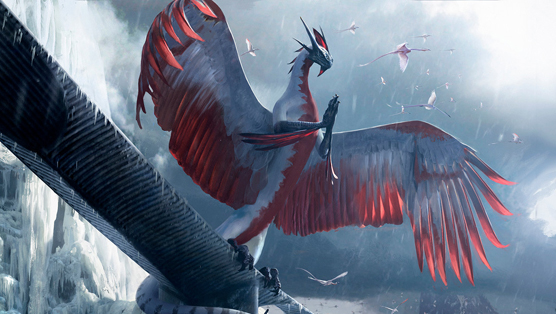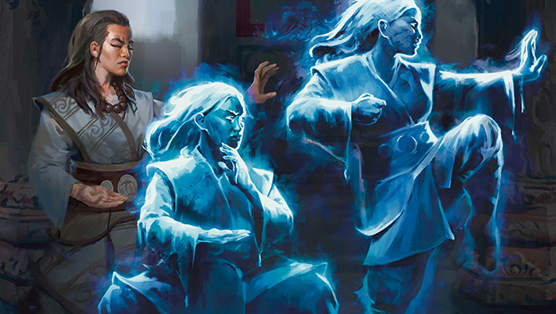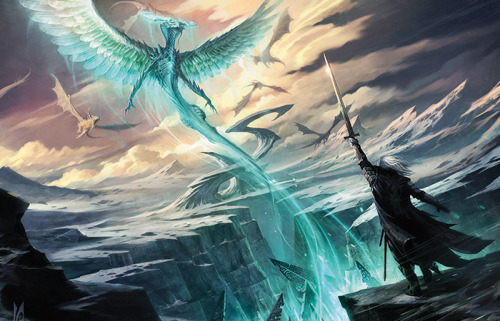Magic for the Masses: Drafting for Dummies
A few months back, we covered the basics of Magic: The Gathering. We’ve gone over cheap (and highly upgradable) standard decks. These pre-assembled deck options made for engaging, easy play, but one of the most spontaneous ways to play Magic is the booster draft. As a result, it can also be the most fun‚ and it’s no surprise that drafting is the most popular play type on Magic Online, the PC-based version of Magic: The Gathering.
For starters, drafting requires minimal investment. The lowest you can possibly go in MTG competitive play, probably, unless you’re slapping decks together after inheriting Cousin Timmy’s closet shoebox. In a draft, you’re paying for essentially three booster packs that day, and you’ll almost always walk home with the cards that you pulled. It’s a great way to build up your collection over time, and an even better way to hone your skills on the fly. The local events near me charge between $12 and $10 for a booster draft, depending on the day.
In booster draft—and this can be frustrating for some players—no dollar amount can give you an edge. Similarly, if your draft strategy is no good, it can be a tough round of games. Think of drafting as the Wild West of Magic—but, unlike Walter Sobchak’s time in ‘Nam, rules still apply—and we’ll go over your basic draft strategies as well as some courtesy tips. The point of this column isn’t how to design a perfect draft deck, as we could re-visit this concept with every expansion ever released in Magic. The idea here is to get you through your first draft without looking like a dingus.
The Setup
If you go to your local gaming store, booster drafts almost always include one eight-player pod. Players might be divided up into different sized pods to accommodate that day’s turnout—usually of an equal number—but the ideal number here is eight players. If you happen to set this up among friends, try to get as close to eight (and here’s a good article that explains why). Even though it’s fun to organize for a game night, I do recommend going to an event or giving MTGO drafting a try before you host your own, just to see how some of the local pros work.
To start, you a Magic draft event almost always begins with three booster packs per player. From these boosters (and your opponents’ boosters) you’ll build a set of cards into a 40-card deck that, with any luck, is pretty good. For the opening booster, you’ll pick one card and pass the remaining cards to your left. You’ll pick another card from the next stack of cards. Once the cards have been distributed completely, you’ll repeat the cycle by passing right. And you’ll do it once more! Passing—you guessed it—to the left.
Keep the cards you select face-down during this phase. Neighbors picking up on your strategy can be toxic, though, it’s inevitable that the table will get a feel for what’s being drafted. It’s obvious, but if you’re suddenly light on blue spells, someone ahead of you is pulling blue—and that’s why the passing direction shifts in the middle of the draft. And with the Khans block’s three-color cards, it became pretty evident early on if your neighbor was playing a specific clan, and now two-color formats make for some less-predictable match-ups. Understanding what strategies are being played will give you a good basis for what to include in your 40-card deck.
Etiquette Tips:
1. Some players stack their selections on top of their empty booster pack to avoid confusion. With all of your cards face-down, and just that signature Magic design staring back at you, stuff gets confusing for first-time drafters. If you accidentally pass your deck stack, stuff gets messy. So, if you don’t want the entire table picking apart your strategy as you unsort your picks.
2. Depending on what’s dealt to a given player, making a selection might not be the easiest move. Try to move your picks along in an appropriate amount of time—and you’ll get a feel for what that time is once you’re in your draft seat. And if a player needs some extra time? Unless it’s getting ridiculous, don’t be a dick. In most of my experiences, people go to these events to kick back and enjoy themselves. An extra 15 seconds of toe-tapping does nothing for anyone. Similarly, unless you’re taking a Metallica song worth of time to draft three cards, don’t feel too pressured to make your picks immediately.
3. Check with your table whether you’ll be removing land cards from the draft. In most drafts I’ve been to, you’ll set aside any basic lands—which are different from Khans’ lifegain or fetch lands—and the additional promo card included in booster packs.
4. Lands are the only kinds of cards you’re allowed to pull from an outside source, and you’ll be able to add as many basic lands as you like. Fetch lands, life lands and scry lands are totally off-limits, unless you pulled them in your packs. But before heading to your shop, or your friend’s place, you should know before whether you need to bring your own lands. Most drafting locations supply lands for you to grab, but you’re in for a stressful situation if you come landless and there isn’t a pool for you to draw from.
Developing a Strategy:
With your first pack, you’re going to be looking for sheer power or consistency. Think of usefulness and utility, and think about single cards that could have an entire strategy based around them. The first rotating packs, depending on what you’re getting, could determine the entire strategy you pick, so try to pick with power and consistency in mind. But also, remember that this is a shorter game than normal. Although you start at 20 life, your strategies will not be as consistent, and your deck is also 20 cards lighter than standard play.



